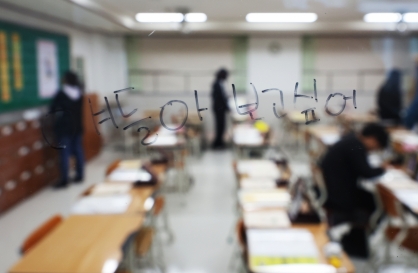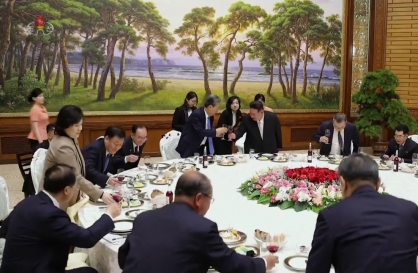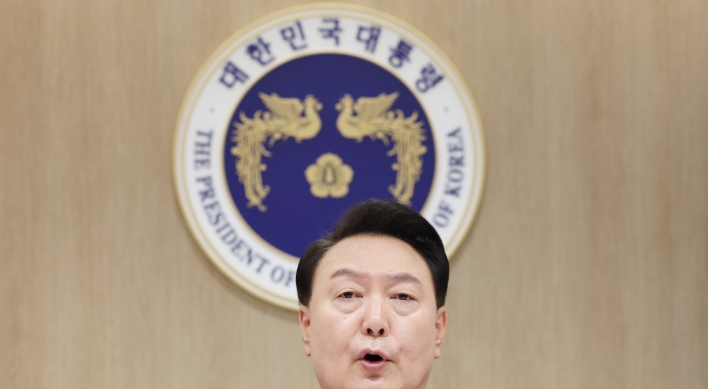[Herald Interview] Capturing hanbok’s beauty with modern elements
Hanbok designer Hwang Lee-sle promotes traditional Korean clothing as everyday wear
By Im Eun-byelPublished : Feb. 5, 2018 - 15:48
Jeans, knee-length skirt, see-through sleeveless dress, lace and frills -- these are not the descriptions that usually come to mind when thinking about hanbok, or traditional Korean clothes. But for everyday hanbok brand Leesle, these words are part of the vocabulary used to describing its products.
Many Koreans these days are reluctant to wear hanbok, as it is expensive and uncomfortable. The skirt is long and the sleeves are too wide. As it is mostly made with silk, it’s difficult to wash.
Many Koreans these days are reluctant to wear hanbok, as it is expensive and uncomfortable. The skirt is long and the sleeves are too wide. As it is mostly made with silk, it’s difficult to wash.
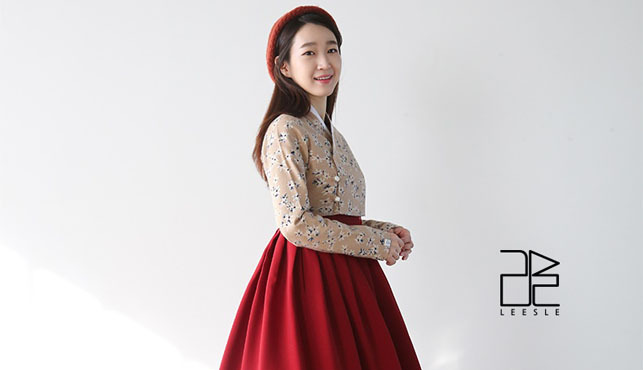
Responding to the widely shared difficulties, hanbok designer Hwang Lee-sle created a new path for the centuries-old attire. With fashion hanbok brand Leesle, Hwang makes a completely different kind of hanbok.
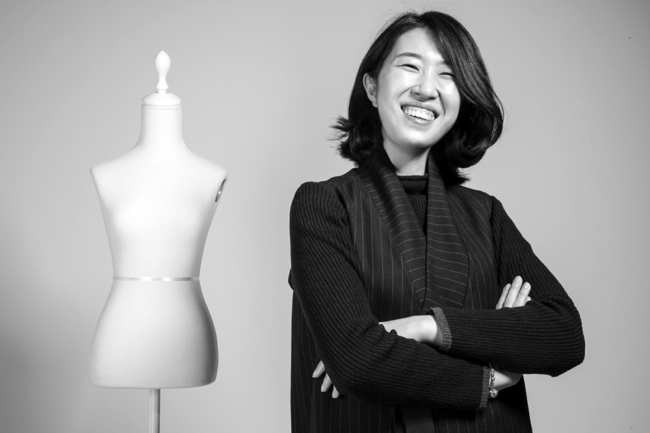
“Before Leesle, I made traditional hanbok, what we wear at weddings and ceremonies,” Hwang said. “Hoping that more would recognize its beauty, I used to promote hanbok. But honestly, hanbok is so uncomfortable.”
Switching direction, Hwang launched Leesle in 2014, aiming to make fashionable yet wearable hanbok. She simplified the designs and added modern elements to the looks. The results were knee-length skirts, denim pants, sleeveless dresses, dresses with frills and lace and see-through blouses.
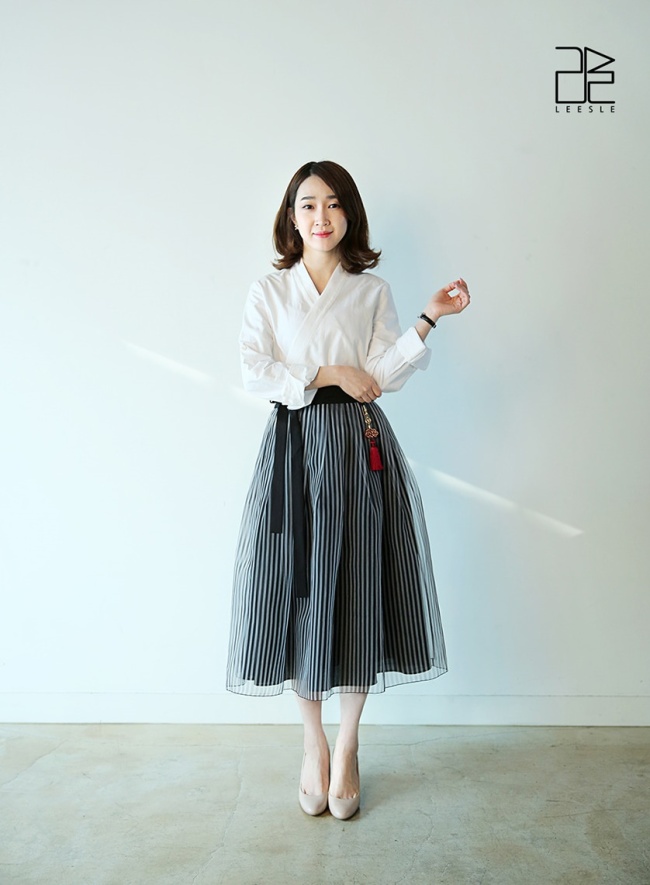
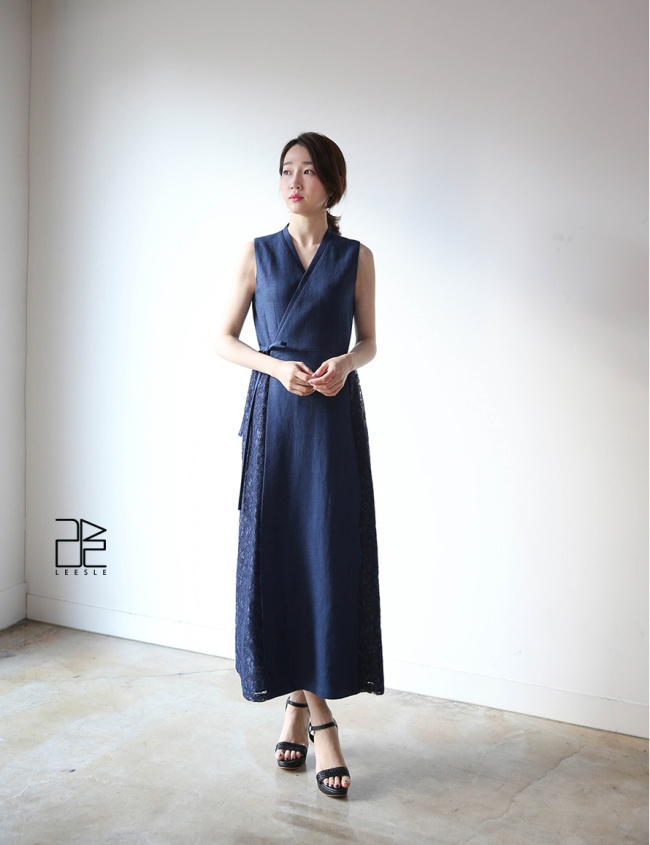
The trailblazing designer is well-recognized in the seemingly conservative hanbok industry. “Insiders are supportive of my attempt, saying ‘Clothing that neglects the consumers and the era will eventually die out,’” she said. “We need change and innovation.”
It may come as a surprise to some that Hwang did not major in design or making hanbok, but in forestry. In college, inspired by a popular cartoon at the time, she made hanbok and later sold it at a relatively high price. The experience got Hwang working with hanbok.
Now Hwang is a hanbok designer and a CEO of two hanbok brands. While Leesle concentrates on making modern hanbok, the original brand Sonzzang focuses on more traditional hanbok. The designer works and sleeps in the same building, staying up late every day, producing more than 30 designs each season.
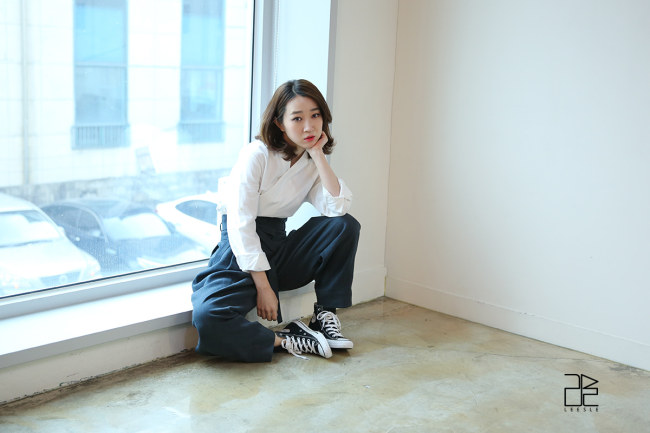
“I actually am not stressed out about having to come up with new designs. Hanbok that we know of are very limited to the late Joseon Era. There are many more forms of hanbok that we do not know of,” she said. “The hard part is making them wearable, transforming them into something that the market will respond to.”
Cost is a major barrier that gets in the way of more people wearing hanbok. “The products usually cost from 100,000 won ($94) to 300,000 won, which could be considered expensive,” Hwang said. “But I will not make cheap, poor quality items. Those who are hesitant about the purchase because of the price can go for specially priced products that we offer from time to time.”
The brand is based in Jeonju, North Jeolla Province, and while she once thought about moving to the capital, Seoul, a three-hour drive away, she is now firm in her decision to stay in the city known for its efforts to preserve traditions.
“Questioning why the young people always have to go to Seoul, I would like to show that a mega-brand can be launched in a small city like Jeonju,” she said. “There is a sense of identity in running a hanbok business in the city of Jeonju.”
Maintaining its flagship store in Jeonju, the brand runs pop-up stores in Seoul. Customers in Seoul can visit the three pop-up stores in the city until Sunday.
To overcome the limitation of its location in a provincial city, the brand values social media as a major advertising strategy. Going further than merely posting photos from lookbooks, the brand continuously runs events through social media, attracting young consumers. For instance, she updates posts under the theme of “Doing 1,000 things while wearing hanbok.”
Photos of Wanna One’s Lai Kuan Lin wearing Leesle’s designs trended across social media, attracting attention from around the globe. The boy band member wore a fashionable hanbok coat, given to him by fans. Hwang said there have been numerous inquiries on the coat since it was revealed that the coat was designed by her.
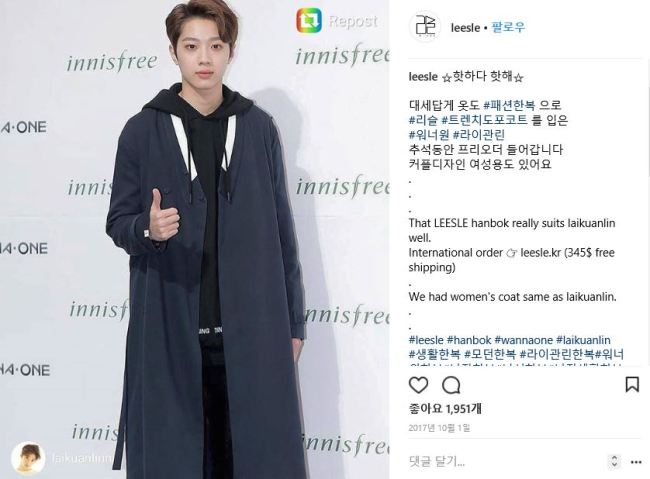
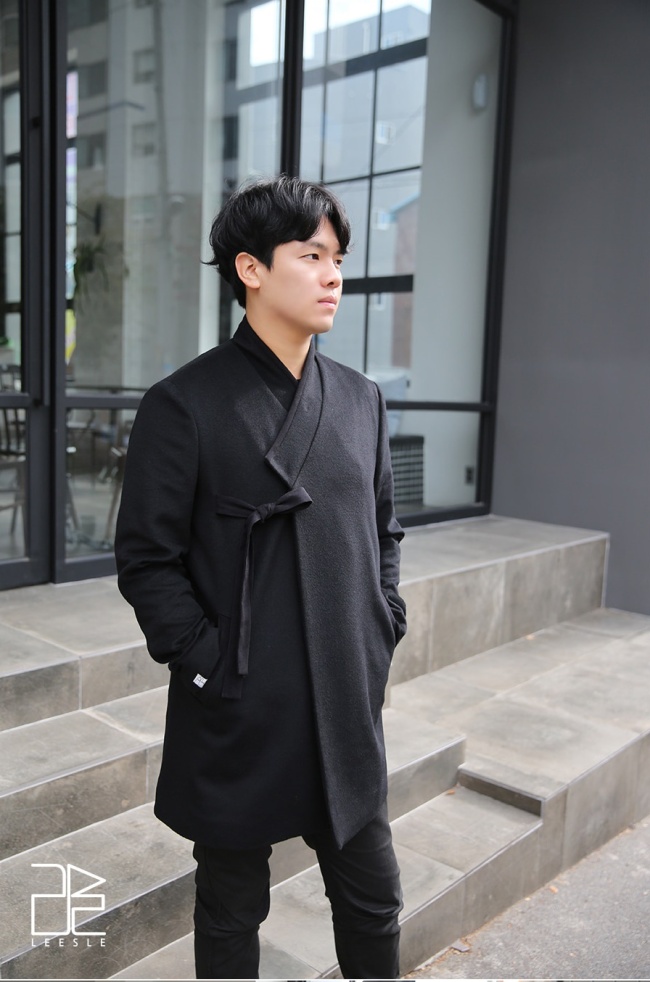
“Thanks to Lai Kuan Lin, the coat was exceptionally popular. Some are surprised that we have hanbok for men,” Hwang said. “Most of the customers are women, but there are men too. While female consumers usually want simple, neutral designs and colors, male customers seek trendy, elaborate attires.”
“Hanbok-stagram” has recently been a trending hashtag. Some young Koreans posted photos of themselves traveling in Europe wearing hanbok. Due to its washer-friendly materials, Leesle is often chosen by the unofficial hanbok ambassadors.
Many, including foreign tourists, visit old Korean palaces wearing rented hanbok as well. While some have criticized the rented garments for not being authentic hanbok, Hwang thanks them for bringing attention to hanbok.
“Hanbok has never received this much attention before. What matters the most is the ‘good experience.’ People can study and know more about it after trying it out first,” she said.
Leesle has become one of the most prominent hanbok brands, showing at fashion fairs in Milan and Paris in 2016.
“It was real competition,” Hwang recalled. “Foreigners do not value hanbok just because it’s a part of Korean tradition. It has to appeal to the consumer’s choice,” said Hwang about her experience showing abroad.
Currently, foreign customers can shop online at Leesle’s online shopping mall website. But the designer hopes to reach a larger market abroad by making way into select shops, to be evaluated by people who aren’t interested in Korea.
The hanbok trailblazer argues that the Korean government should value hanbok as it is Korea’s tradition.
“Hanbok requires more attention than it is getting right now. Hanbok Advancement Center’s annual budget is insufficient, even when compared with other governmental foundations that oversee the promotion of traditional food or architecture,” Hwang said.
The successful CEO runs seminars for young people who want to work in the hanbok industry. “There isn’t a major in a university exclusively related to hanbok. Young people, who want to pursue a career in hanbok making, are frustrated,” she said.
Ironically, hanbok is sidelined as novelty wear and many hanbok stores are turning into rental shops. Consumers question why they have to buy hanbok, when they are going to wear it once or twice a year. Hwang argues that the industry has to adjust to the consumers’ lifestyles.
“Fashion is a process of explaining culture and style. It is intuition, stimulating the desire without further explanation,” designer Hwang said. “Beautiful clothes are beautiful to everyone at first sight. That’s the kind of clothes that I want to make.”
By Im Eun-byel (silverstar@heraldcorp.com)


